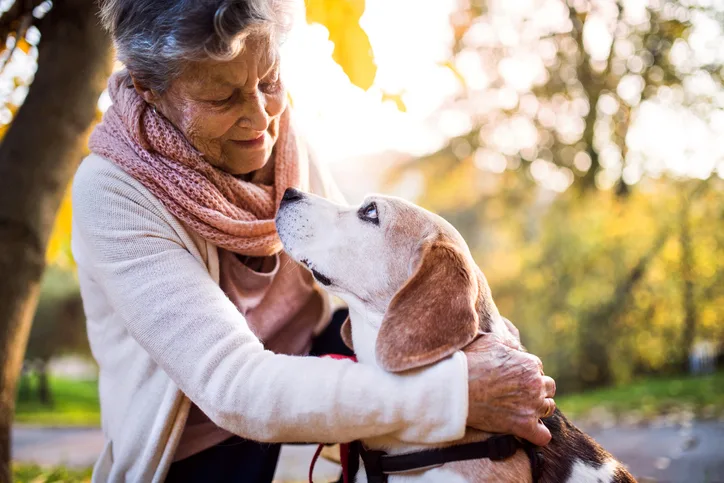
Handling aging pets is not easy, but Erika Bruner, DVM, offers expertise and compassion during hour-long free community discussions that help pet owners navigate their pets later years and end-of-life concerns.
Practicing Quality of Life
Libraries have become an extension of Dr. Bruner’s veterinary practice in Vermont, where she hosts free discussions for owners of older pets. The number one question she hears is “How do I know when it's time?”.
“People know they need to talk about it, but they don’t always know how,” said Dr. Bruner, who owns Heart of Vermont (a mobile clinic), near Montpelier, and is certified in acupuncture. “Veterinarians don’t always have time to cover that kind of information during annual exams.”
More Than Managing Arthritis
Dr. Bruner’s talks always cover 2 main concerns: mobility and cognitive changes. “Owners need practical information,” Dr. Bruner said, “like how to get a dog to stay on the floor.” Most owners aren’t aware pets can get dementia, so she addresses possible signs. She touches on the daily challenges of living with pets that are increasingly fragile, may need a special diet, or take medications with adverse effects.
Pain is a critical area that owners often fail to recognize because their pet can’t tell them what’s wrong, Dr. Bruner noted. For example, owners may not recognize chronic pain can prevent their dog from going up and down stairs. Panting or restlessness are often described as signs of pain but can also be signs of confusion as a result of dementia. Owners tend to assume their pet is going blind or deaf when they don’t respond to calls and commands, Dr. Bruner observed, but maybe they no longer understand what they see or hear.
Dr. Bruner encourages owners to use the Journeys Quality of Life Scale, developed by veterinarians. The idea behind this scale is not to generate a score that determines whether it’s time for euthanasia, she noted, but to give owners a better perspective of how their pet is feeling. “The goal posts move,” Dr. Bruner said. “A good day now is not the same as a good day two years ago.” The scale also helps owners recognize they are an important part of the process—their understanding, awareness, and quality of life also matters.
Path To Palliative Care
Dr. Bruner didn’t set out to become a senior pet specialist after she graduated from the Cummings School of Veterinary Medicine at Tufts University in 2001. Her career started in mixed animal practice, then moved to brick-and-mortar small animal practice, work with the Vermont Humane Society, and, finally, her own mobile veterinary service. She now concentrates her mobile clinic on end-of-life veterinary care. Dr. Bruner allots 3 mornings each week for small animal acupuncture appointments, but the rest of her time is booked with end-of-life care visits or phone consults. Keeping flexible appointment times allows Dr. Bruner to be home for dinner with her teenage daughter, which is quality of life for her.
Dr. Bruner sees herself filling a gap in an under serviced area. “People get increasingly reluctant to bring their older pets to the vet office,” she said. Although Dr. Bruner recommends consults with a regular veterinarian, owners can be afraid of judgement about the quality of care they are able to give their pet, especially when they refuse diagnostic testing.
Being There
The veterinary community has had a generally positive response to her efforts, noted Dr. Bruner. She provides a good referral option for colleagues that either don't do end-of-life care in the home or don’t have time due to busy schedules; however, Dr. Bruner believes clinics would find an eager audience for geriatric or quality of life consults. “Sometimes it’s less about diagnostics and more about listening to people talk about the daily life challenges of caring for their older pet,” she said.
Dr. Bruner recalled a home consult with an owner who provided excellent care for her older dog, including regular visits to the clinic, pursuing recommended diagnostic tests and medications, and feeding a balanced, homemade diet formulated by a veterinary nutritionist. Yet the owner worried she was missing something. “Sometimes the most important thing is just to be with your pet,” she reminded the owner.
“[Clinicians] can get so caught up in technology and diagnostics that we forget the simpler parts,” said Dr. Bruner. “And that's often the part that people most want from us.”